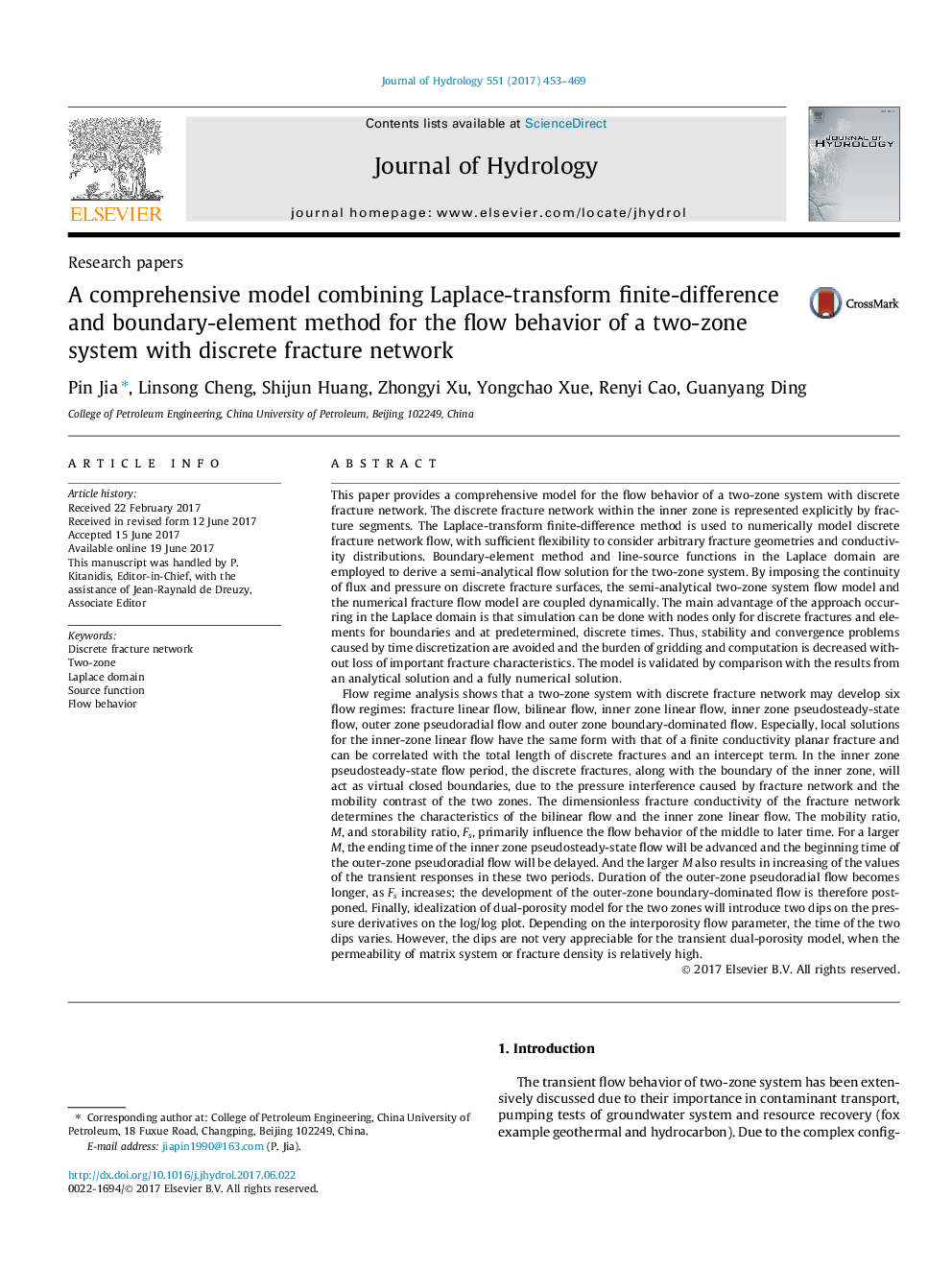| کد مقاله | کد نشریه | سال انتشار | مقاله انگلیسی | نسخه تمام متن |
|---|---|---|---|---|
| 5770914 | 1629903 | 2017 | 17 صفحه PDF | دانلود رایگان |

- New models are developed by use of the solutions in Laplace domain.
- The system exhibits six flow periods.
- Discrete fracture network conductivity dominates the early-time flow behavior.
- Local solutions for inner zone linear flow are similar with that of a planar fracture.
This paper provides a comprehensive model for the flow behavior of a two-zone system with discrete fracture network. The discrete fracture network within the inner zone is represented explicitly by fracture segments. The Laplace-transform finite-difference method is used to numerically model discrete fracture network flow, with sufficient flexibility to consider arbitrary fracture geometries and conductivity distributions. Boundary-element method and line-source functions in the Laplace domain are employed to derive a semi-analytical flow solution for the two-zone system. By imposing the continuity of flux and pressure on discrete fracture surfaces, the semi-analytical two-zone system flow model and the numerical fracture flow model are coupled dynamically. The main advantage of the approach occurring in the Laplace domain is that simulation can be done with nodes only for discrete fractures and elements for boundaries and at predetermined, discrete times. Thus, stability and convergence problems caused by time discretization are avoided and the burden of gridding and computation is decreased without loss of important fracture characteristics. The model is validated by comparison with the results from an analytical solution and a fully numerical solution.Flow regime analysis shows that a two-zone system with discrete fracture network may develop six flow regimes: fracture linear flow, bilinear flow, inner zone linear flow, inner zone pseudosteady-state flow, outer zone pseudoradial flow and outer zone boundary-dominated flow. Especially, local solutions for the inner-zone linear flow have the same form with that of a finite conductivity planar fracture and can be correlated with the total length of discrete fractures and an intercept term. In the inner zone pseudosteady-state flow period, the discrete fractures, along with the boundary of the inner zone, will act as virtual closed boundaries, due to the pressure interference caused by fracture network and the mobility contrast of the two zones. The dimensionless fracture conductivity of the fracture network determines the characteristics of the bilinear flow and the inner zone linear flow. The mobility ratio, M, and storability ratio, Fs, primarily influence the flow behavior of the middle to later time. For a larger M, the ending time of the inner zone pseudosteady-state flow will be advanced and the beginning time of the outer-zone pseudoradial flow will be delayed. And the larger M also results in increasing of the values of the transient responses in these two periods. Duration of the outer-zone pseudoradial flow becomes longer, as Fs increases; the development of the outer-zone boundary-dominated flow is therefore postponed. Finally, idealization of dual-porosity model for the two zones will introduce two dips on the pressure derivatives on the log/log plot. Depending on the interporosity flow parameter, the time of the two dips varies. However, the dips are not very appreciable for the transient dual-porosity model, when the permeability of matrix system or fracture density is relatively high.
Journal: Journal of Hydrology - Volume 551, August 2017, Pages 453-469